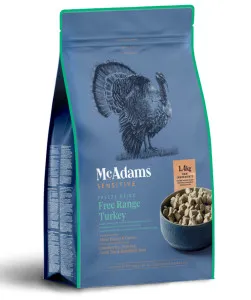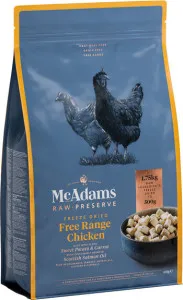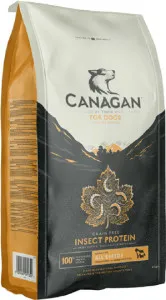How to Transition Dog Food Safely in 2025: Step-by-Step Guide
Switching your dog’s food isn’t as simple as swapping one bag for another. A sudden change can lead to digestive upset, food refusal, or even long-term health issues. Whether you’re upgrading to a premium brand, addressing allergies, or simply trying a new formula, a gradual transition is key. In this guide, we’ll walk you through the safest way to switch dog food in 2025 while keeping your pup happy and healthy.
Why a Slow Transition Matters
Dogs have sensitive digestive systems, and abrupt changes in their diet can cause:
- Upset stomach (vomiting or diarrhea)
- Loss of appetite (refusing to eat the new food)
- Allergic reactions (if ingredients are unfamiliar)
- Stress or anxiety (due to sudden changes in routine)
- High-quality protein (real meat as the first ingredient)
- Limited fillers (avoid excessive corn, wheat, or soy)
- Added nutrients (probiotics, omega fatty acids, etc.)
- Days 1-2: 75% old food, 25% new food
- Days 3-4: 50% old food, 50% new food
- Days 5-6: 25% old food, 75% new food
- Day 7: 100% new food
- Stool consistency (firm but not too hard or loose)
- Energy levels (no sudden lethargy or hyperactivity)
- Coat condition (shinier fur is a good sign)
- Appetite (enthusiasm for meals should remain steady)
- Switching too fast (skipping steps in the transition plan)
- Mixing wet and dry food abruptly (introduce new textures gradually)
- Ignoring ingredient overlaps (some proteins or grains may still trigger allergies)
- Overlooking hydration (ensure fresh water is always available)
- Severe or prolonged diarrhea/vomiting
- Signs of an allergic reaction (swelling, hives, excessive scratching)
- Complete refusal to eat for more than 24 hours
- Unusual lethargy or behavioral changes
By transitioning slowly, you give your dog’s gut microbiome time to adjust, reducing the risk of discomfort. Plus, it helps you monitor for any adverse reactions before fully committing to the new food.
Step-by-Step Guide to Transitioning Dog Food
Follow this tried-and-true method to ensure a smooth switch:
Step 1: Choose the Right New Food
Before making any changes, research the best options for your dog’s age, breed, and health needs. Use our Pet Food Analyzer to compare ingredients, protein sources, and nutritional profiles. Look for:
Step 2: Follow the 7-Day Transition Plan
A week-long transition is ideal for most dogs, but sensitive pups may need up to 10 days. Here’s how to do it:
If your dog shows signs of digestive upset, slow down the process by extending each phase by a day or two.
Step 3: Monitor Your Dog’s Reaction
Keep an eye on:
If you notice persistent issues like vomiting, excessive gas, or itching, consult your vet—your dog may need a different formula.
Recommended Products

McAdams Freeze Dried Free Range Turkey is an excellent choice for how to transition dog food safely in 2025: step-by-step guide. This dog food contains Boneless Free Range Turkey 86.5% and other high-quality ingredients that promote overall health.

McAdams Freeze Dried Free Range Chicken is an excellent choice for how to transition dog food safely in 2025: step-by-step guide. This dog food contains Boneless Free Range Chicken 86% and other high-quality ingredients that promote overall health.

Canagan Insect is an excellent choice for how to transition dog food safely in 2025: step-by-step guide. This dog food contains Freshly Prepared Insects (27%)* and other high-quality ingredients that promote overall health.
Special Considerations for 2025 Dog Food Trends
With new advancements in pet nutrition, here’s what to keep in mind when transitioning in 2025:
1. Alternative Proteins
Insect-based and lab-grown proteins are gaining popularity. If switching to these novel ingredients, extend the transition period to 10-14 days to allow your dog’s system to adapt.
2. Personalized Nutrition
DNA-based and subscription meal plans are becoming more common. If using a tailored formula, follow the brand’s specific transition guidelines for best results.
3. Sustainable Options
Eco-friendly kibble and upcycled-ingredient diets may have different textures or smells. Mixing thoroughly with the old food can help your dog accept the change.
Common Transition Mistakes to Avoid
Even well-meaning pet parents can slip up. Steer clear of these pitfalls:
When to Consult a Vet
While most transitions go smoothly, seek professional advice if your dog experiences:
Your vet can recommend a hypoallergenic diet or prescribe supplements to ease the transition.
Final Thoughts
Transitioning your dog’s food safely in 2025 requires patience and attention to detail. By following this step-by-step guide, you’ll minimize stress for both you and your furry friend. Remember, every dog is unique—adjust the timeline as needed based on their individual response.
For more personalized recommendations, try our Pet Food Analyzer to find the perfect match for your pup’s dietary needs. Happy feeding!
